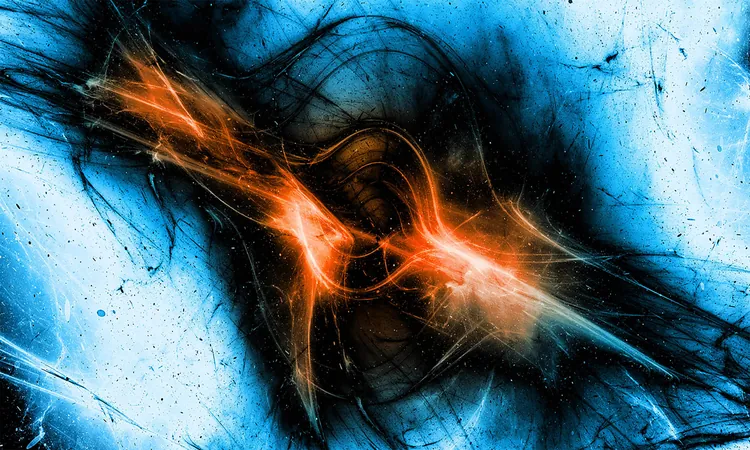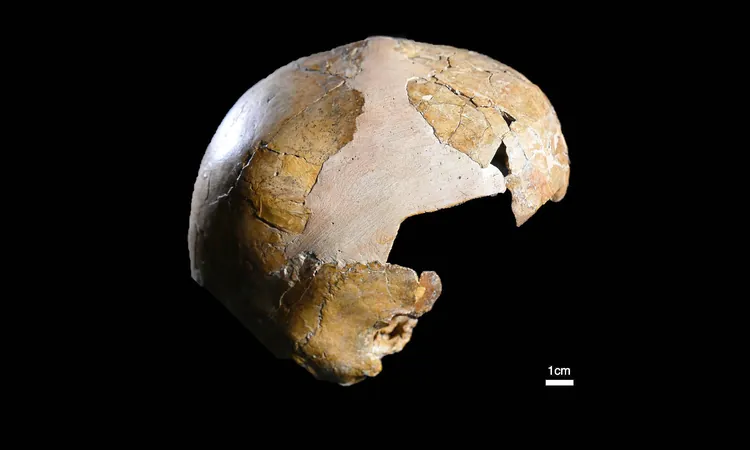
Is Dark Matter a Myth? New Study Suggests the Universe is 27 Billion Years Old
2025-09-02
Author: Yan
The cosmos may seem straightforward with its stars, gas, and the gravitational forces that bind them. However, a closer look reveals a much more complex reality.
For decades, scientists have relied on a model suggesting that much of what exists in the universe is invisible, composed of dark matter and dark energy. Yet, both have never been directly observed, leading to ongoing debates and questions.
A Revolutionary Perspective on Cosmic Mysteries
In a groundbreaking study, astrophysics professor Rajendra Gupta from the University of Ottawa challenges the need for dark matter and dark energy altogether. He argues that our traditional views may be hindering our understanding of the universe.
Gupta claims his research indicates the universe is approximately 26.7 billion years old and does not require dark matter for its existence. This revelation suggests we may be overlooking fundamental truths in cosmology.
Two Game-Changing Concepts: CCC and Tired Light
Gupta’s theory merges two innovative concepts: covarying coupling constants (CCC) and 'tired light' (TL). CCC posits that the fundamental forces of nature, such as gravity and light speed, might change over time. If proven, this could revolutionize our understanding of cosmic evolution.
On the other hand, the TL concept reinterprets the redshift of light from distant galaxies—not merely as a sign of cosmic expansion but as evidence that photons lose energy over their long journey, making them appear redder.
The Ongoing Debate: Is Dark Matter Real?
The existence of dark matter is not a recent idea; it dates back to the 1930s when astronomer Fritz Zwicky noted anomalies in the movements of galaxy clusters. Observations over the decades have also shown many galaxies rotating faster than expected, suggesting there must be more mass than what we can see.
Traditionally, dark matter is believed to constitute about 27% of the universe, with visible matter making up less than 5%. The rest remains unexplained, often attributed to dark energy driving the expansion of the universe.
A Paradigm Shift in Understanding Cosmic Expansion
Gupta’s findings propose that if forces weaken over time, we no longer need dark energy to account for the accelerating expansion of the universe. Instead, he contends that this acceleration is a natural result of these changing forces.
New Paths to Cosmic Understanding
A significant aspect of Gupta's work is centered on the phenomenon of redshift, comparing galactic distributions from low and high redshifts. According to his model, these observations align without the inclusion of dark matter.
He states, "My study is unique because it consistently eliminates the need for dark matter while aligning with key cosmological observations long accepted by the scientific community."
What Could This Mean for Cosmology?
Should Gupta’s CCC+TL model withstand scrutiny, it could reshape our understanding of the cosmic microwave background, galaxy formation, and even the principles of distance and time in the universe.
Rigorous Testing Required
For this theory to gain acceptance, it must not only articulate clear predictions but also withstand rigorous observational tests. This includes examining galaxy rotation profiles and lensing maps.
Researchers are already analyzing existing data to challenge or support Gupta’s hypotheses, focusing on cosmic phenomena such as supernova behavior and the distribution of galaxies across vast scales.
The Future of Cosmology: A Brave New Universe?
The implications of Gupta's work raise crucial questions: Are dark matter and dark energy mere placeholders in our equations, while the truth lies in evolving constants? Could the universe be significantly older than we thought?
As researchers strive for independent validation of Gupta’s findings, the scientific community brims with anticipation. If the CCC+TL model continues to align with observational data, it could open up a new frontier in cosmological research and our understanding of the universe.
This captivating study challenges established beliefs and encourages scientists to reassess the fundamental components of our universe.



 Brasil (PT)
Brasil (PT)
 Canada (EN)
Canada (EN)
 Chile (ES)
Chile (ES)
 Česko (CS)
Česko (CS)
 대한민국 (KO)
대한민국 (KO)
 España (ES)
España (ES)
 France (FR)
France (FR)
 Hong Kong (EN)
Hong Kong (EN)
 Italia (IT)
Italia (IT)
 日本 (JA)
日本 (JA)
 Magyarország (HU)
Magyarország (HU)
 Norge (NO)
Norge (NO)
 Polska (PL)
Polska (PL)
 Schweiz (DE)
Schweiz (DE)
 Singapore (EN)
Singapore (EN)
 Sverige (SV)
Sverige (SV)
 Suomi (FI)
Suomi (FI)
 Türkiye (TR)
Türkiye (TR)
 الإمارات العربية المتحدة (AR)
الإمارات العربية المتحدة (AR)